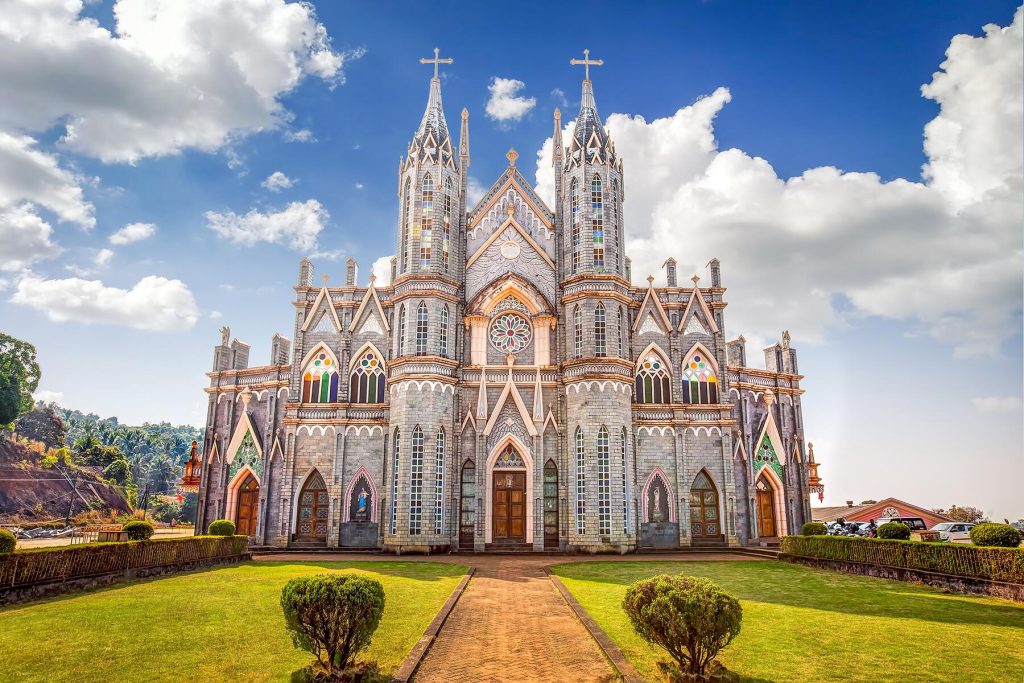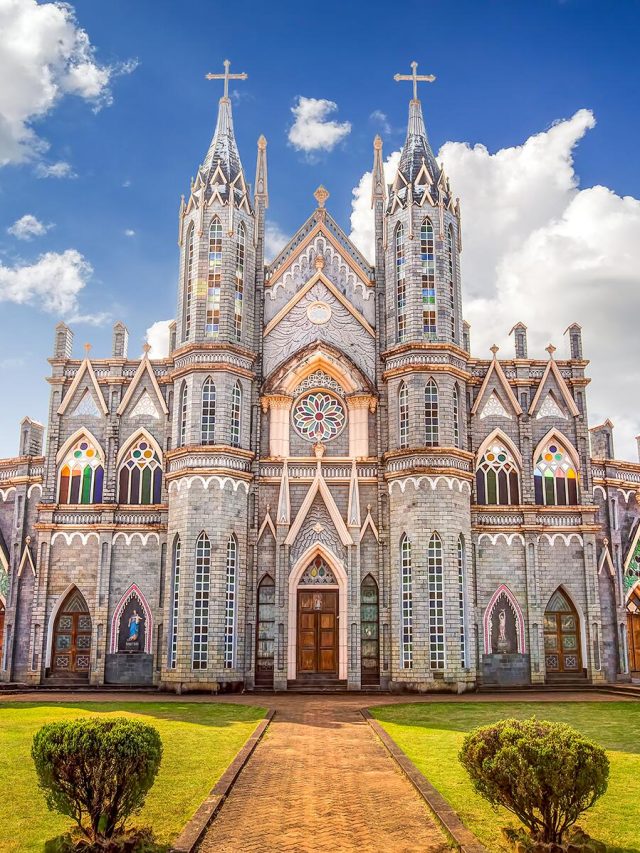India boasts a diverse tapestry of ancient churches that bear witness to the country’s rich religious and cultural history. Among them, the San Thome Basilica, St Francis Church, and Basilica of Bom Jesus are some of the oldest churches in India that offer glimpses into India’s colonial past, blending intricate architecture with profound spiritual significance. These ancient churches not only serve as places of worship but also as landmarks of historical importance, drawing pilgrims and history enthusiasts alike to witness their timeless beauty and significance. Let’s look at the 10 oldest churches in India.
1. St Thomas Syro Malabar Catholic Church
The Palayur Mar Thoma Major Archiepiscopal Church or the St Thomas Syro Malabar Catholic Church is situated in Palayur, Thrissur, Kerala. It was built in 52 AD by Saint Thomas, one of the twelve apostles of Jesus Christ. It is dedicated to Saint Cyriac. The church’s design combines Persian church architecture with Hindu ornamentation. Above the nave, the church’s roof rises like a tower. The entrance resembles a mandapa, or pavilion with pillars used for public rituals. The original altar that Thomas built at St Thomas Syro Malabar Catholic Church is still in place.
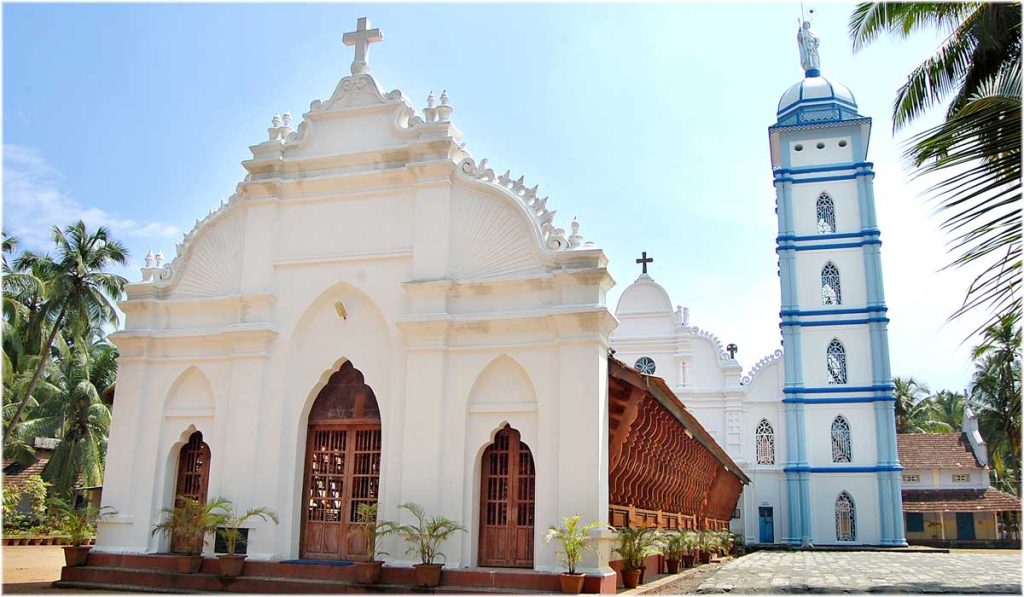
2. Thiruvithamcode Arappally
Thiruvithamcode Arappally translates to Royal Church. It is also known as Thomayar Kovil or St. Mary’s Orthodox Church. Thiruvithamcode Arappally is situated in Kanyakumari, Tamil Nadu and was built in 63 AD by Saint Thomas. The church was primarily constructed in the 17th century and added an entrance hall in the 20th century. Quarried local stone, chipped with multiple tips was used to construct its walls.
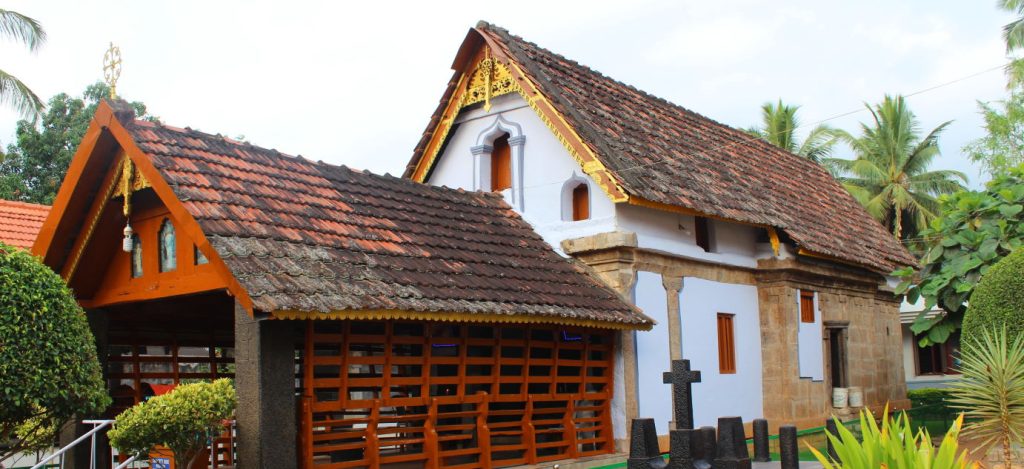
3. St Mary’s Orthodox Syrian Church
Located in Kallooppara, Pathanamthitta, Kerala, St. Mary’s Orthodox Syrian Church was built in 1339 AD. It dates back to the Edappally dynasty’s founding. Dedicated to Saint Mary, the St Mary’s Orthodox Syrian Church features wood-carved figures and sculptures. The church’s holy slab carries millennium-old engravings, albeit faded.
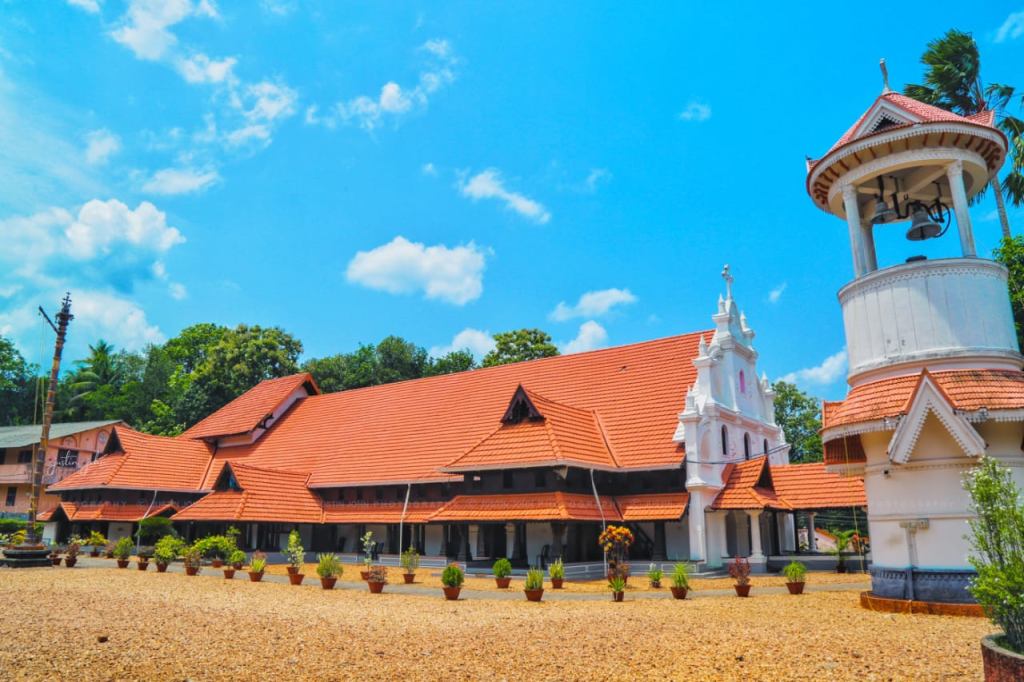
4. St Francis Church
St Francis Church was first constructed within Fort Emmanuel, Fort Kochi, Kochi, in 1503. It is the original burial place of Portuguese explorer Vasco da Gama. It was constructed by Alphonso Alburquerque, dedicating it to Saint Bartholomew. The church has a tile-covered, gabled timber frame roof. The church’s windows and doors feature semi-circular arches. A stepped pinnacle is placed on either side of the facades. Three chambers make up the bell turret of St Francis Church. The Portuguese and Dutch gravestones are located on the northern and southern walls of the church, respectively.
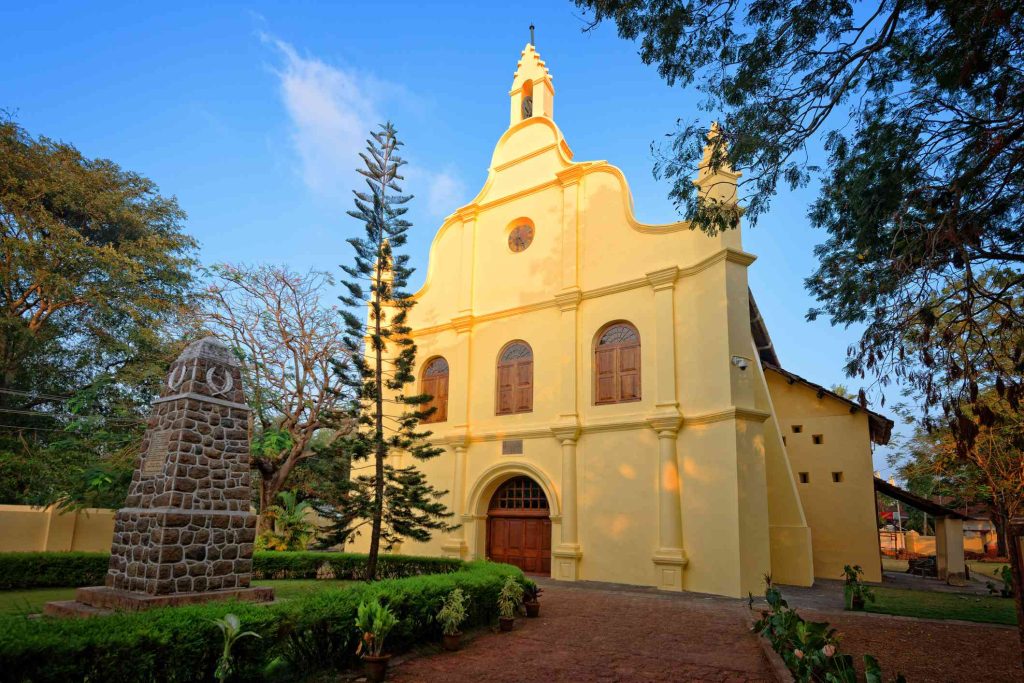
5. St Andrew’s Church
Originally constructed in 1575 by Portuguese Jesuits, St Andrew’s Church is situated in Bandra, Mumbai. The church’s high altar is adorned with statues of St. Andrew, Our Lady, and the Sacred Heart. Above the larger statues are smaller representations of the Bom Jesu, St. Sebastian, and St. John the Baptist. Portuguese-style wood side altars from the 16th century were painted and carved. Along with a 16th-century pulpit, the hanging wood panels portray the Resurrection of Christ and the Assumption of Mother Mary. A single stone is used to sculpt the compound’s cross. The front facade is divided in the centre by a tiny circular aperture. The choir loft at St Andrew’s Church serves as a miniature museum. When the church was enlarged, the two towers that had originally flanked the façade on either side were destroyed and replaced with new ones that had stained glass windows. The Baptistery, with its recently restored stained glass window, is located at the base of the other tower. It also has three immaculate bells.
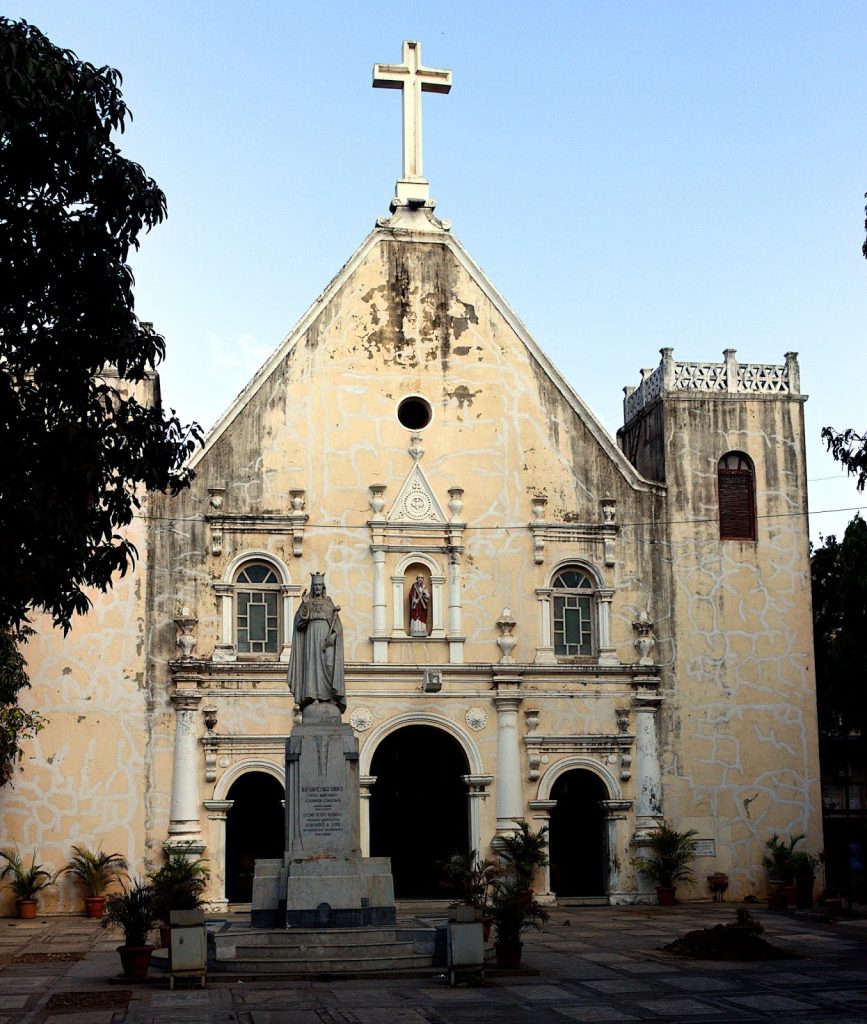
6. Basilica Of Bom Jesus
Goa is home to the Basilica of Bom Jesus, famed for housing the mortal remains of Saint Francis Xavier. It is regarded as one of India’s best examples of Portuguese colonial architecture and baroque architecture. The church’s construction was started in 1594 and finished in 1605. Precious stones are inlaid into the marble floor. The church interior is plain, save for the ornate gilded altars. There is a humungous statue of St Ignatius of Loyola on the main altar. The statue’s eyes are fixed on the Jesuits’ gold emblem, surrounded by rays of light. The Holy Trinity is centred over the emblem. Christ and his apostles during the Last Supper are depicted on the altar table. Additionally, the Basilica of Bom Jesus has paintings depicting events from St. Francis Xavier’s life. The 17th-century Florentine sculptor Giovanni Battista Foggini created the mausoleum’s design. The coffin that holds his remains is made of silver. Dom Martin’s works are displayed in the Bom Jesus Basilica Art Gallery.

7. St Mary’s Church
C.S.I. St. Mary’s Church is located in Fort St George, Chennai, Tamil Nadu. It was finished in 1680. Either William Dixon or Edward Foule designed the church. The structure is divided into two aisles and a nave that serve as the choir’s sanctuary. There’s a large gallery at the west end of the nave, supported by carved Burmese teak pillars. The gallery is accessible from the outside via two curved staircases. At the end of the seventeenth century, the tower to the west of the nave was added. Early in the eighteenth century, the spire was added. Built in the nineteenth century, there are two vestries at the east end of each aisle. The 4 feet thick walls divide the nave from the aisles. They shielded the building from storm damage and assault. St Mary’s Church also has a bomb-proof roof, roughly four feet thick and curved like a wagon roof.

8. St John’s Church
St John’s Church was constructed in Marredpalli, Secunderabad, in 1813. The 108-year-old pipe organ, the brass plaques listing the names of the long-gone Britishers citizens, and the Rangoon/Burma teak wooden roof are all in immaculate condition. It has a Tuscan architectural design. The belfry carries a large blue cross. The altar is to the east. The stained glass window above the altar is adorned with images of John the Baptist. The interior of the St John’s Church is made of monolithic marble set atop a finely polished granite foundation. The entire structure was constructed using Surkhi mortar, with walls that are two feet thick. Modified Tuscan round columns coated in Mughal plaster support the roofs.

9. Christ Church in Shimla
The Christ Church in Shimla, Himachal Pradesh was finished in 1857. It is designed in neo-Gothic style. There are five exquisite stained-glass windows in the church representing the Christian virtues of Faith, Hope, Charity, Fortitude, Patience, and Humility. Rudyard Kipling’s father, Lockwood Kipling, designed the chancel window. Christ Church’s pipe organ was installed in 1899. The Christ Church in Shimla has a large library with numerous old scriptures.
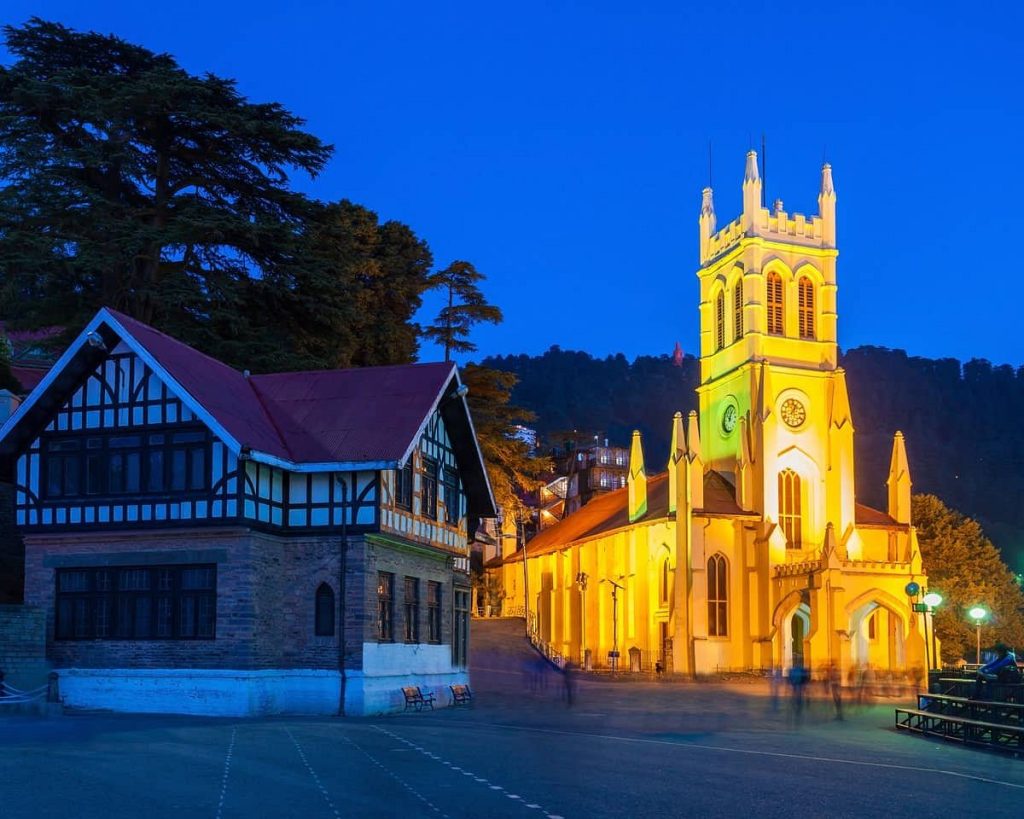
10. St Philomena’s Church
The 1936 construction of St Philomena’s Church, also known as the Cathedral of St. Joseph and St. Philomena or St. Joseph’s Cathedral, was done in the Neo-Gothic style at Mysuru, which was influenced by the Cologne Cathedral in Germany. Daly, a Frenchman, was the designer. The cathedral’s layout is shaped like a cross. The nave, or congregation hall, is the long portion of the cross. The transepts are the two arms of the cross. The crossing is the area that houses the choir and the altar. Within St Philomena’s Church’s crypt is a statue dedicated to St. Philomena. The church’s twin spires rise to a height of 175 feet (53 meters). Stained glass windows in the nave portray scenes from the Last Supper, the Crucifixion, the Resurrection, the Birth of Christ, and the Ascension of Christ.
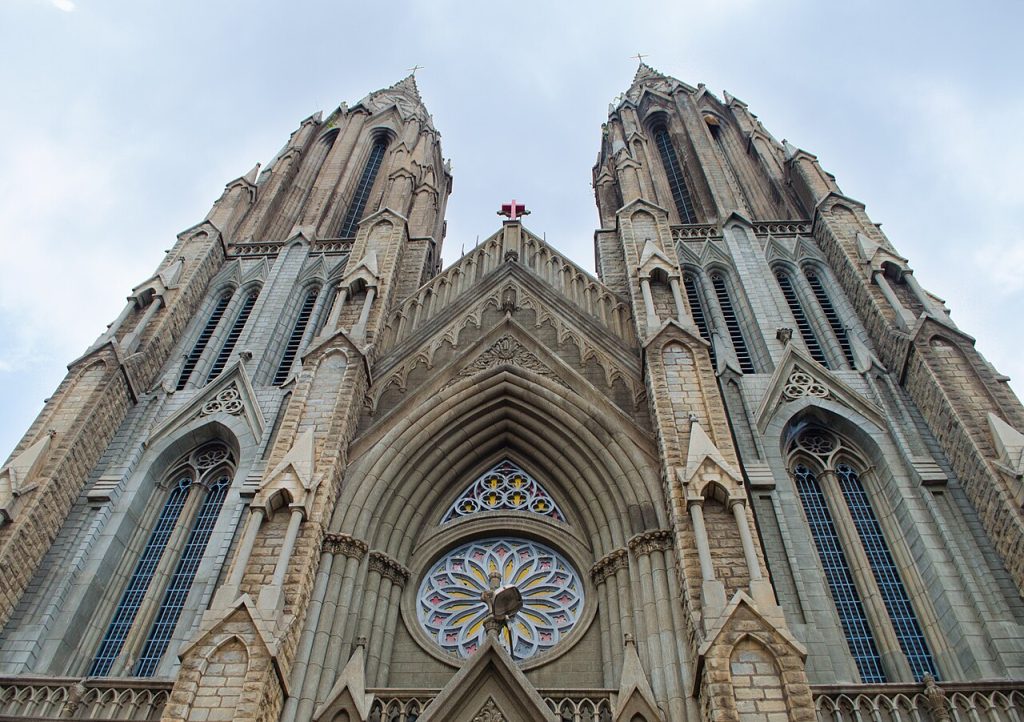
Image Courtesy – Fodors Travel Guide

